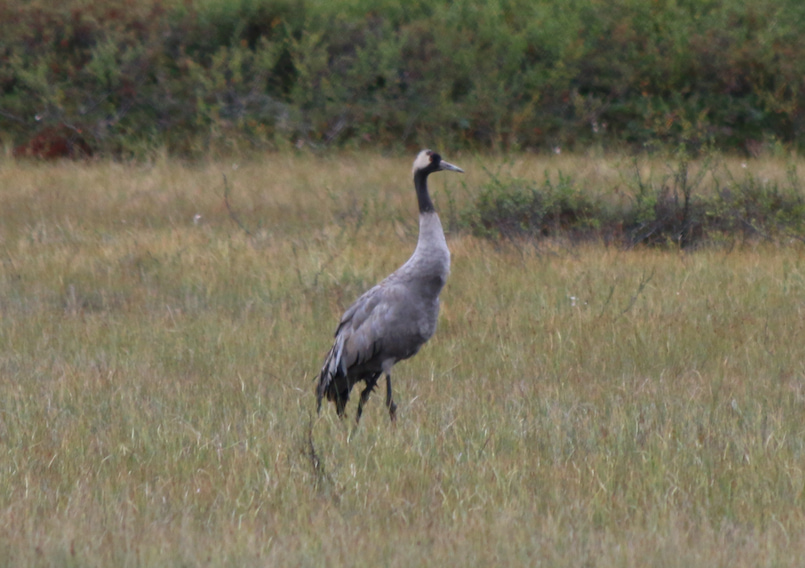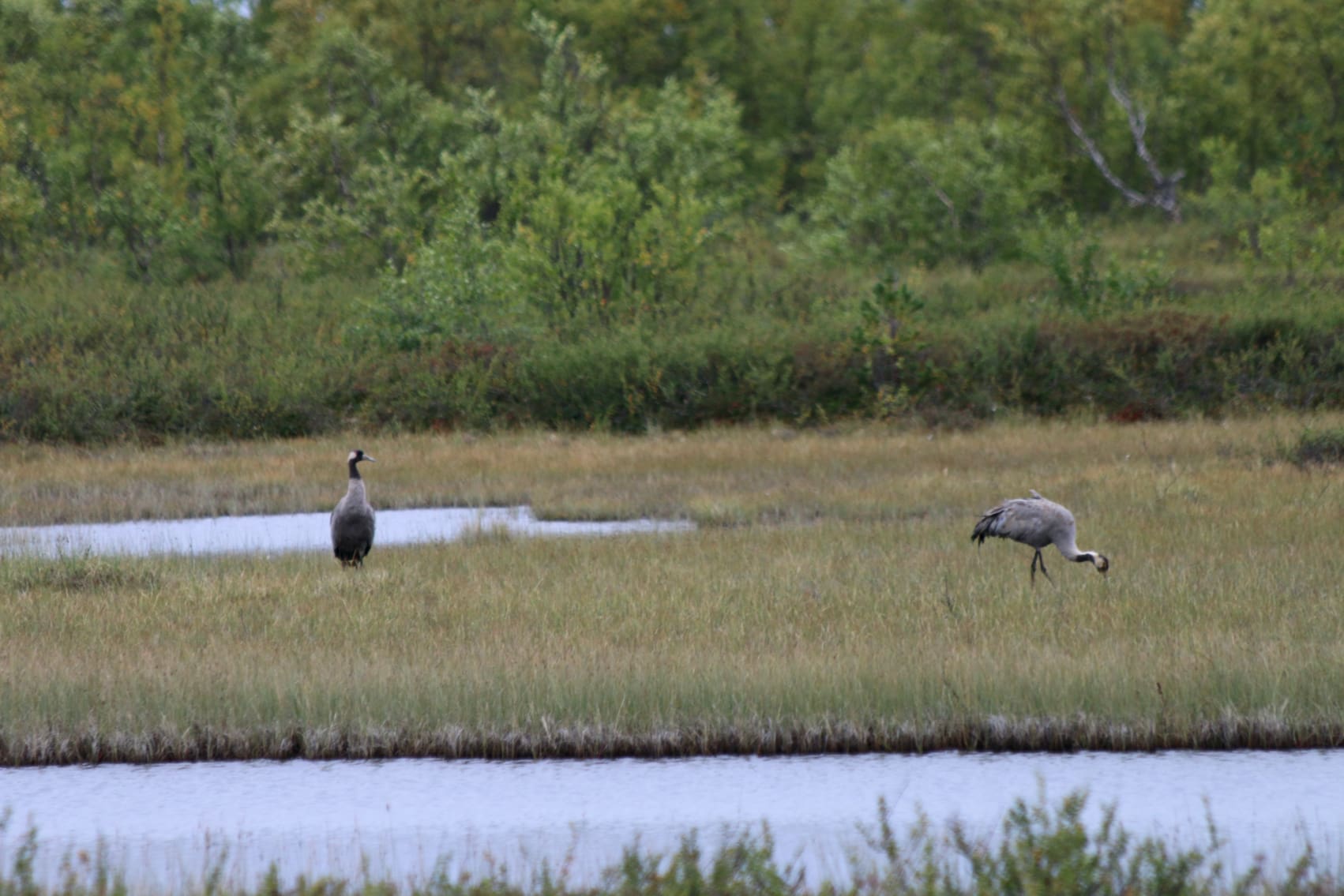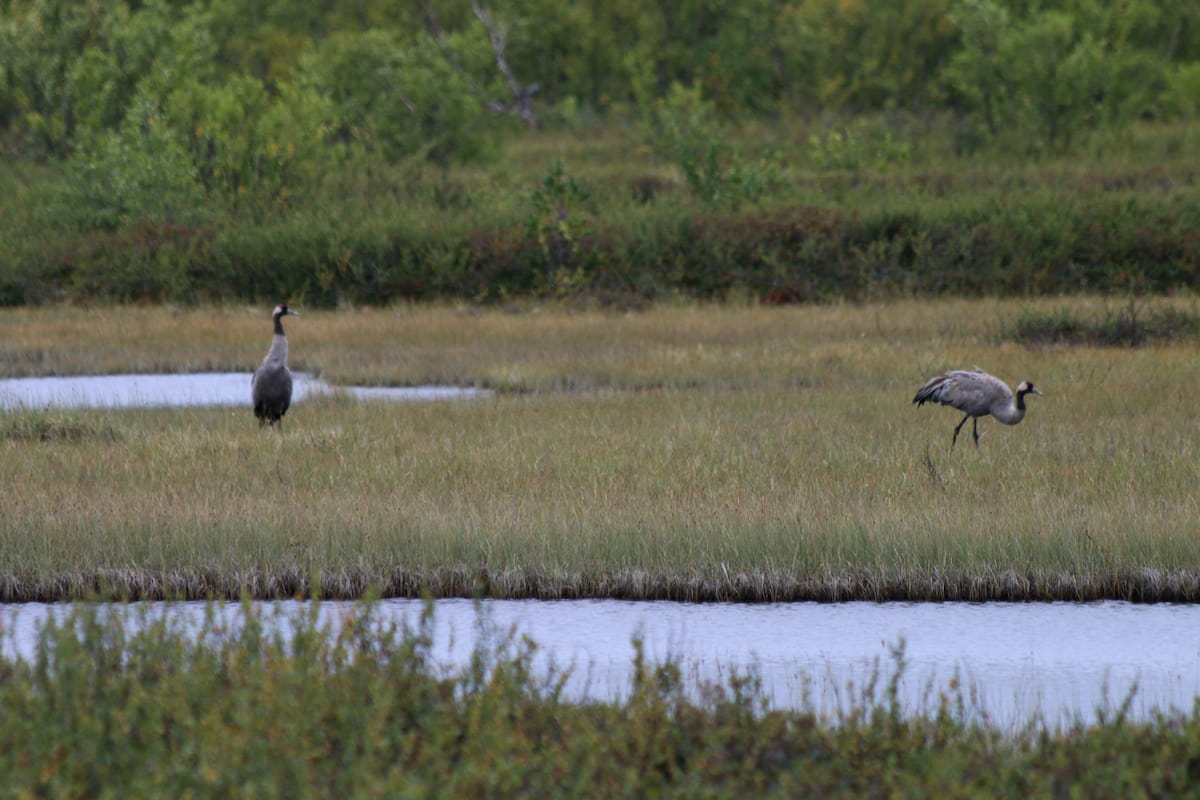Cranes in finish lapland

The crane is one of the largest birds in Europe.
The common crane (Grus grus), is a summer inhabitant of Lapland, where he carries out the breeding process, after which he travels to more southern regions such as Spain to spend the winter (a century ago, Spain was also a breeding place). They inhabit humid areas, where they look for their food with their beaks. Their diet is omnivorous, they can feed on fruits and vegetables as well as invertebrates, amphibians or small fish. In northern Europe, their favorite places are the lagoons within the taiga, although in this case, these cranes from Finnish Lapland (near the Käsivarren Natural Park) are in some lagoons in the middle of the birch forests (Betula pubescens ), in the transition between taiga and tundra. In Russia they can also be found in drier areas such as steppes, as long as they have water areas nearby. In Spain, in addition to swampy and humid areas, they also choose places like the pastures of Extremadura to spend the winter.

Cranes usually live in wet areas.
Their diet is omnivorous, they can feed on fruits, seeds, tubers and vegetables as well as invertebrates, amphibians or small fish. It is a large bird (the females being slightly smaller), it can reach a length of 130cm and a weight of more than 6kg. The plumage of its body is gray, the head has white, black and red colors (strip without feathers). The clutches are usually of two chicks. The chicks will remain with their parents until the next breeding season. They reach sexual maturity at 3 years of age and can live for more than 30 years.

In the background you can see the boreal birch forest.
Tags: grulla, grua, crane, finlandia, finland, laponia, lapland, tundra, taigamontserratnatural.com @Copyright 2020
Privacy Config